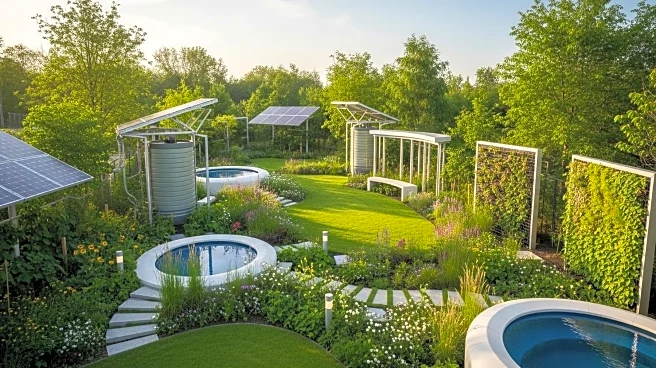What's Happening?
Toby Kyle, Studio Director of Landscape at WATG, is recognized for his leadership in sustainable design practices within the tourism and hospitality sectors. With over 20 years of experience, Kyle has been instrumental in guiding international design teams through projects that emphasize environmental and cultural sensitivity. His approach integrates human wellness into design, aiming to create spaces that harmonize care for the planet with care for humans. Kyle's work is characterized by a commitment to fostering deep connections between built environments and their natural surroundings.
Why It's Important?
The emphasis on sustainable design in tourism and hospitality is crucial as these industries face increasing pressure to reduce their environmental impact. Toby Kyle's leadership in this area highlights the growing trend of integrating wellness and sustainability into architectural practices. This approach not only benefits the environment but also enhances the user experience, potentially leading to increased satisfaction and loyalty among clients and visitors. As sustainability becomes a key differentiator in the market, companies like WATG that prioritize eco-friendly practices may gain a competitive edge.
What's Next?
As sustainable design continues to gain traction, WATG and leaders like Toby Kyle are likely to expand their influence in the industry. Future projects may increasingly focus on innovative solutions that address climate change and resource conservation. Stakeholders in tourism and hospitality may seek partnerships with firms that demonstrate a strong commitment to sustainability, potentially leading to new business opportunities and collaborations. The ongoing evolution of design practices will likely see further integration of technology to enhance sustainability and wellness outcomes.
Beyond the Headlines
The shift towards sustainable design in tourism and hospitality reflects broader societal changes in attitudes towards environmental responsibility. This movement may influence regulatory policies, encouraging more stringent sustainability standards across industries. Additionally, the focus on human wellness in design could lead to new research and development in areas such as biophilic design and eco-friendly materials, driving innovation and setting new benchmarks for industry practices.











